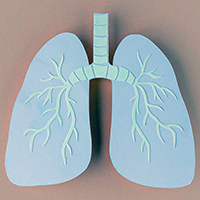Serum KL-6 as predictive and prognostic marker of interstitial lung disease in childhood connective tissue diseases: a pilot study

Submitted: 27 January 2021
Accepted: 27 June 2021
Published: 22 November 2021
Accepted: 27 June 2021
Abstract Views: 6419
PDF: 887
Publisher's note
All claims expressed in this article are solely those of the authors and do not necessarily represent those of their affiliated organizations, or those of the publisher, the editors and the reviewers. Any product that may be evaluated in this article or claim that may be made by its manufacturer is not guaranteed or endorsed by the publisher.
All claims expressed in this article are solely those of the authors and do not necessarily represent those of their affiliated organizations, or those of the publisher, the editors and the reviewers. Any product that may be evaluated in this article or claim that may be made by its manufacturer is not guaranteed or endorsed by the publisher.
Similar Articles
- M. Varenna, F. Bertoldo, M. Di Monaco, A. Giusti, G. Martini, M. Rossini, On behalf of SIOMMMS, Endorsed by SIR, Safety profile of drugs used in the treatment of osteoporosis: a systematical review of the literature , Reumatismo: Vol. 65 No. 4 (2013)
- R. Ramonda, P. Frallonardo, F. Oliviero, M.G. Lorenzin, A. Ortolan, A. Scanu, L. Punzi, Pain and microcrystalline arthritis , Reumatismo: Vol. 66 No. 1 (2014)
- M.C. Abdulla, Spontaneous soft tissue haemorrhage in systemic lupus erythematosus , Reumatismo: Vol. 68 No. 4 (2016)
- R. Torta, F. Pennazio, V. Ieraci, Anxiety and depression in rheumatologic diseases: the relevance of diagnosis and management , Reumatismo: Vol. 66 No. 1 (2014)
- M. Radin, G. El Hasbani, A. Barinotti, D. Roccatello, I. Uthman, A. Taher, S. Sciascia, Quality of life measures in systemic lupus erythematosus: a systematic review , Reumatismo: Vol. 73 No. 4 (2021)
- M. D'Amore, G. Minenna, P. Scagliusi, S. D’Amore, Osteoporosis in adult with Marfan syndrome: casuality or causality? , Reumatismo: Vol. 57 No. 2 (2005)
- A.C.C.D. Baccaro, G.L. Behrens Pinto, R.C.S. Carboni, S.K. Shinjo, The clinical manifestations at the onset of antisynthetase syndrome: A chameleon with multiple faces , Reumatismo: Vol. 72 No. 2 (2020)
- C. Tani, M. Mosca, A. d'Ascanio, D. Versari, A. Virdis, L. Ghiadoni, S. Taddei, A. Salvetti, S. Bombardieri, Chronic inflammation and endothelial dysfunction: analysis of a cohort of patients with SLE and UCTD , Reumatismo: Vol. 58 No. 3 (2006)
- M. Frassi, A. Brucato, I. Cavazzana, F. Franceschini, D. Faden, M. Motta, A. Doria, R. Cimaz, M.P. Pisoni, M. Muscarà, G. Castellino, G. Brambilla, P.L. Meroni, R. Cattaneo, C. Biasini Rebaioli, C. Antonioli, G. Balestrieri, A. Tincani, Neonatal lupus: clinical features and risk of congenital cardiac heart block in newborns from mothers with anti Ro/SSA antibodies , Reumatismo: Vol. 53 No. 4 (2001)
- A. Fassio, D. Gatti, P. Gisondi, G. Girolomoni, O. Viapiana, A. Giollo, M. Zamboni, M. Rossini, L. Idolazzi, Effects of secukinumab on serum adipocytokines: preliminary data , Reumatismo: Vol. 69 No. 3 (2017)
<< < 3 4 5 6 7 8 9 10 11 12 > >>
You may also start an advanced similarity search for this article.

 https://doi.org/10.4081/reumatismo.2021.1399
https://doi.org/10.4081/reumatismo.2021.1399




